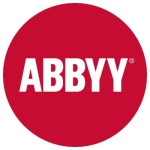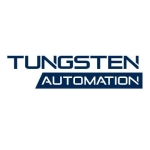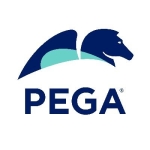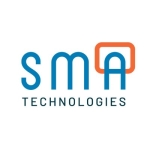Automation reduces dependencies. When I have a process that is done by humans, there are dependencies. For example, I need to make sure that the required number of people are available in different shifts. Any process that is done by a human has to be split into eight to nine hours of work. After every eight hours, I have a replacement happening for the same work. So, multiple people are working in different shifts. In addition, any work through humans can only be done from Monday to Friday, or I have to get the team over the weekend. Making our team work over the weekend requires special permissions or approvals. With automation, I am at ease. I'm not dependent on anybody. UiPath is easily accessible from mobiles for the orchestration part. So, if I have a critical process that I need to execute and get the results, I can do it from my mobile. Even when I'm traveling, I can get real-time statistics.
Previously, I used to get a request at any time to do the pay run for an employee. If the employee was on a leave on that particular day or was not available, I used to miss my target or deadline. Now, we are not dependent on anybody. We are completely independent. If I get a request, the robot is automatically going to process it automatically. I don't even have to tell the robot to run a process after getting a request. All my rules and validations are taken care of by automation before the deadline. If I'm away from the office, my robot can automatically trigger a process on receiving a request. So, we are able to meet all the deadlines, targets, and standards set by the company within the given timeframe.
It has helped in minimizing our on-premises footprint. We work for multiple zones and across the globe. If I have a UiPath architecture, I can deploy it anywhere. Irrespective of the country or continent or zone, I'm able to use the same deployment or the same architecture at multiple locations. It has reduced my cost of infrastructure and maintenance. The cost of everything has come down. Previously, we used to have servers country-wise and continent-wise, but now, we don't need multiple servers and multiple teams to maintain them. I can do things from a single location with a limited set of resources.
The majority of our processes are in the unattended mode, but we do have certain processes in the attended mode where certain end-users provide me the real-time information. We have designed a process where we give a specific form to the user. When the form is filled by the user, a process is automatically triggered, and the robot starts processing. It gives real-time statuses and information to the end-user in terms of what we are doing, how are we doing the calculations, and how are they going to get the benefit by opting for certain features within our organization. I can run my processes in the attended and unattended mode. So, I'm able to trigger both modes of automation very easily.
I am able to keep my customer data integrated. With humans, a data leak can happen, but in the case of robotics, my data is very secure.
The way the processing happens is also very smooth. For example, if I'm on leave or on a break, and a customer calls at my help desk, I won't be able to respond. Now, we have chatbots or robots running throughout the day. When the executives are not there and anyone calls the customer support team, customers are able to get a resolution. They don't have to keep calling or wait. Automatically, the bot is able to respond to their queries and concerns. We have been able to reduce the response time. My customers are pretty much satisfied with it, and they don't have any complaints. Previously, the satisfaction level of the customers was not that great.
The best part of automation is that we can easily integrate multiple technologies within a single tool. I can do it at ease with all of my data flow. Automation is happening across the globe, not only in my organization. Every time we do automation, we feel that there is something overlapping in every process. If I automate a process for my organization and your organization, 50% of the things would be the same. I can very easily maintain common things in automation tools through common libraries or common components. For the remaining 50% of things, we use different technologies. We are integrating optical character recognition (OCR) technologies for document processing. We are also using multiple machine learning methodologies to do pattern matching. We are using artificial intelligence to give a response that is comparable to a human response.
We use its AI functionality in our automation program. We get multiple requests, and they can be through telephone, emails, or documents. When a request comes through the telephone, the robot or automation is designed to convert that to text. When a request comes through a document, we are using AI features. The document might not have a proper structure, and a customer can give any set of data in any format. So, we have built a special template or format, and this AI is helping us to extract the document with the most accurate results possible. We are getting an accuracy of 95%. With this, dependency is also gone. A human has to properly go through a document. Then, we have to convert the data to the file and process it. With AI, irrespective of the size of the document, which can be 100 pages or 500 pages, we are able to exactly locate the data that we're looking for, and we are able to extract and then process it through automation. We are able to smoothly integrate multiple things within a single process.
Its AI functionality has enabled us to automate more processes. It takes a human 23 minutes to process a 500-page document. With AI features, it hardly takes 7 minutes to process the same document. There is a great reduction in the time taken to do the same task, which is a huge benefit. With AI, I can look for, find, and extract specific information in a particular document, and then I'm able to process the information at ease. I can have documents in different formats. For example, each insurance customer or service provider can have different formats. A human would have to scan through multiple pages to reach the conclusion that this is the right data. AI can easily process different formats, whereas a human being has to be trained for different formats. Humans might also understand something and forget something, but that's not the case with AI or automation tools. They always remember the instructions given to them, which has drastically helped us in making our processes more accurate.
It has contributed to end-to-end automation in our organization. End-to-end automation helps us in completing things in a shorter span of time and utilizing resources in a better way. Previously, for every step of a process, we used to have a different team. We had a separate team for the following:
- Requirement gathering
- Answering the queries for the customers
- Responding to the queries by the ticketing system
- Responding to emails
- Processing particular processes at the backend
- Supporting the infrastructure in real-time
Now, all these things are done by robotics. I only need a few people to maintain my infrastructure.
We use the UiPath Apps feature, and it has definitely helped us. If there is something that is not available within our team, we can directly use all the apps and features given by UiPath. We don't have to dedicatedly set up a team to design that app. If I have to design a new app or a chatbot for my customers, I can easily integrate the UiPath Apps feature instead of recruiting people, training them, and expecting them to give me the output. UiPath provides help and documentation, and if I require any licenses or support, UiPath's team is always available to assist us.
The UiPath Apps feature has increased the number of automations that we can create. It reduces the time to create automations. We can easily create automation. For a small process, we're able to roll out one automated process every 21 days. We are able to roll out an automated and complex end-to-end process every three or five months to our customers. Previously, it used to take us at least six months to one year to roll out the new features or new functionality to customers, but now, the time has drastically come down.
It speeds up or reduces the cost of digital transformation. Every time we automate, we are able to speed up automation. We are able to do more things, and more people are working on automation. By using new features that UiPath is bringing and the learnings from my past experience, we are able to automate very quickly. Four and a half years ago, a process used to take four months. Now, it only takes 25 days for me. They have added many features, and I don't have to sit and design those features. They are constantly providing new features in their quarterly releases, and I can simply make the best use of them and implement them in my process.
Previously, I needed people in different shifts, and every human being might not have the same speed or enthusiasm. Humans also need breaks. A robot works throughout the day, and it has a consistent processing speed, so we are able to process more and more. I can plan a target with my robot, and I am able to achieve that. If I'm adding new customers, I just have to integrate one or two more licenses, which is very easy. I can easily create or configure a new robot and start processing. With humans, I have to train them again and again, whereas with automation, once a process is ready, I can use it in multiple robots. I can use it for 25, 50, or 100 robots very easily. I can scale my process rate very fast.
Previously, we were able to process 5,000 customer requests in a month. By using automation, we are able to do the same amount of work within 10 days or even within a week. If we add more human resources, it increases the cost for my organization, whereas, with robotics, I can configure 10 robots or 100 robots. It doesn't increase the cost a lot for my organization, and I can process everything that I want. I don't have any backlog.
It has freed up the time of our employees. This additional time has enabled employees to focus on higher-value work. I am utilizing resources in a much better way, and I am able to give them the work that is interesting for them or is relevant to their growth. When people in my team started working, they found the job interesting. After working for more than two to three years on the same thing, they don't feel that they're doing something new or learning something new. By using automation for a lot of things, I am able to train my team on the new things or technology that they are interested in or want to work with. I am also able to give the work that they're looking for. It is bringing more satisfaction, not only from the customers' perspective but also from my team's perspective. I am able to keep the same resources in my organization for a longer period of time because they're very happy. They are not dissatisfied with the organization.
It has definitely reduced human error. Our accuracy is 99.2%. With humans, our accuracy was 96%, and by using robotics, we have brought the accuracy to 99.2%.
It has also reduced the costs of our automation operations. In the initial year, we saved 10% of the day-to-day operational cost that we had when we were doing things manually. In the second year, it was 30%, and it has increased in the subsequent years. So far, almost 60% turnaround in the business profit has been reported.
It has saved costs for our organization. Previously, for a process, I had to train, for example, 100 people and keep them in multiple shifts. I also had to give them multiple facilities to be a part of the organization, whereas with robotics, I only have to design the process once, and I can use it in any number of bots, such as 10, 25, or 50. It also helps in scaling at no extra cost.
By using automation, we need fewer people for support operations. If the customer queries are taken care of by chatbots, my data and patterns are being analyzed by using AI and ML, and the scanning of the documents is taken care of by OCR, I need very few people for support operations. I need only 10% of people for providing support around the clock.
We only have to design the process once, and we can use it in any number of bots. It helps in scaling at no extra cost. After we design a process, we can reuse it in subsequent designs. I just have to work on the things that are not already designed. So, there is a 10% to 30% reduction in the new processes that we design. Scalability improves with each and every design.
There is a user base of 100,000 users who are benefiting from automation at the moment. With manual processing, if I had a team of 1,000 people, then with automation, I would need 50 people to automate all processes. I would have four to five solution consultants or solution architects and around 15 to 20 developers and testers. There would also be people who are doing the business implementation, giving guidance to the customers, and doing the production rollout and handover preparation for the customers.
Our usage is increasing. With every new process that we design, we are able to integrate more and more. Previously, we only used to integrate with OCR, and now, we are also using chatbots, AI, and ML. So, our processes are increasing, and we are definitely expanding.
It was pretty straightforward for us. We were able to build the entire infrastructure within a week. This includes getting licenses, doing the installation, and configuring the robots. We found the UiPath documentation very helpful while doing the installation and configuration.
If I design a process today, I can deploy a process to production within 30 minutes of time. It is very quick. In terms of the implementation strategy, we go to the customer and understand their pain points. We then identify the processes that can be automated and tell them about the benefits and the timeframe for implementing a particular process to their server. We also tell them when will they start seeing the result and how they can achieve what they need by using multiple integrations of the tool. They don't have to spend multiple licenses on different tools. Everything can be done within a single tool.
We use a tool called TFS. With a single click, I can deploy my process from development to QA. In the same way, I can move my process from QA to UAT, and then with one more click, I can move it from UAT to production.
As solution architects, our role is to help the design team understand the design that has to be built. They take care of the design and testing. For the production rollout, we have an infrastructure team. We also sit with the business team to make them understand the process, how robotics works on a day-to-day basis, and what are the things that they have to monitor. Whenever we design a process, we make sure that all the complexities are handled. We are also handling all the compliance, and the integration is done smoothly. After a process is designed and approved by our business team, our accuracy stands at 99%.
In terms of maintenance, it doesn't require expensive or complex application upgrades or IT application support. UiPath is pretty simple. The basic infrastructure works in most of the servers, and we don't need frequent upgrades and maintenance. It is very easy to maintain.
Anyone who wants to automate processes should understand the process, its complexity, and the volume of the processing or the number of transactions to be processed. You should do proper analysis before you select the tool and licenses.
UiPath provides a lot of benefits and reduces the cost for an organization. It is one of the best tools in the market. The support that we get from UiPath is one of the best, and most of the features provided by UiPath are simply amazing.
Initially, people are hesitant to use automation because they don't know what automation can do. Anybody who uses the technology in the right way will get lots of benefits from any technology. Your implementation strategy has to be proper. You should check the feasibility of using a particular technology with existing processes in the organization and the benefits you can get.
It helps us in reducing the time, and we are also able to bring more business to the company. By making my processes digital, I'm bringing more revenue to my company. We visit a customer's site and try to find out the processes and pain points. After that, we analyze the entire solution within UiPath and tell the customer about the best solution and what would be the reduction in time as compared to the normal process.
I would rate UiPath a nine out of 10.




















